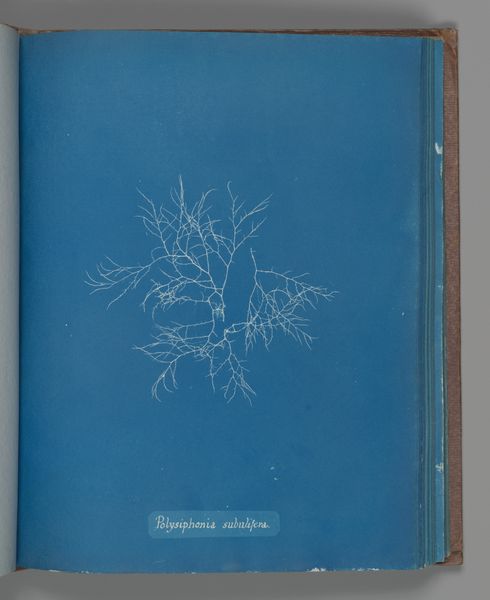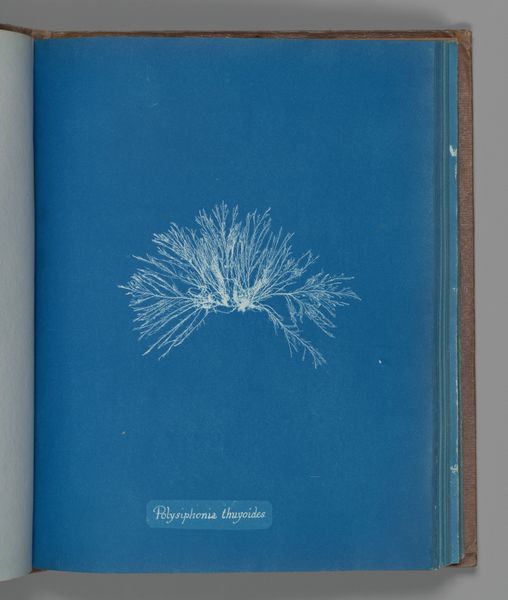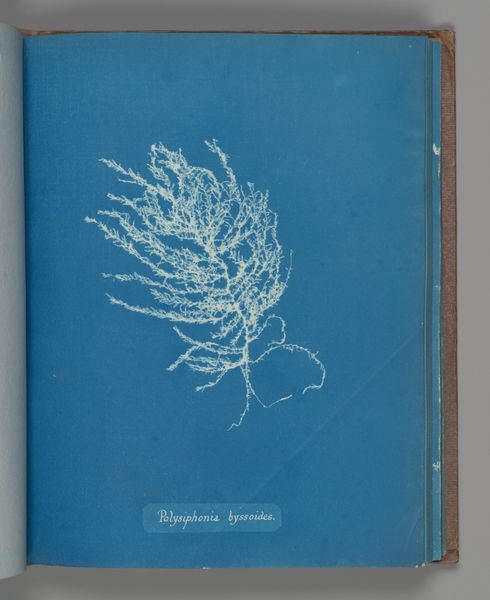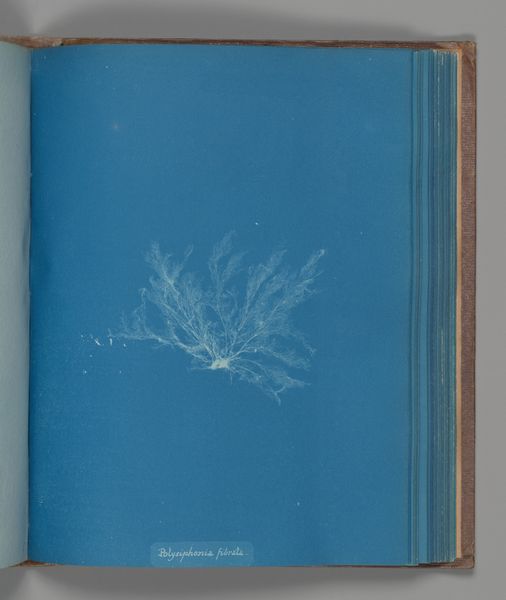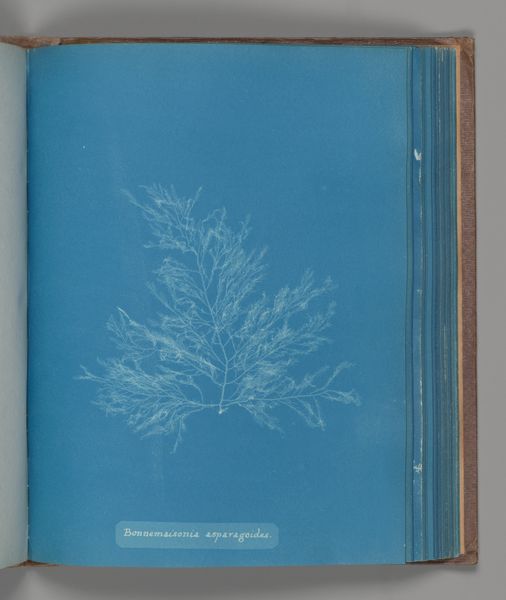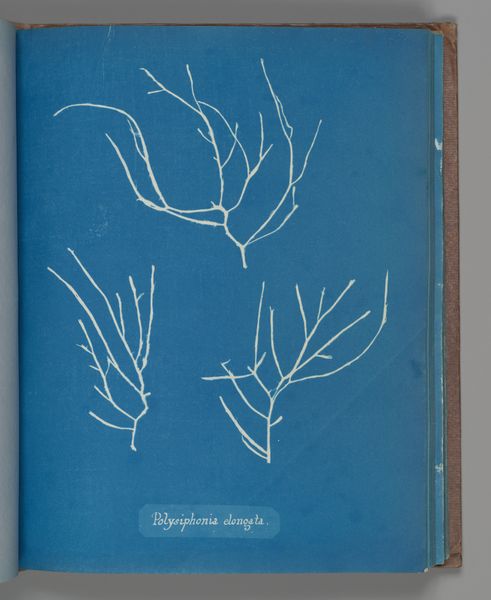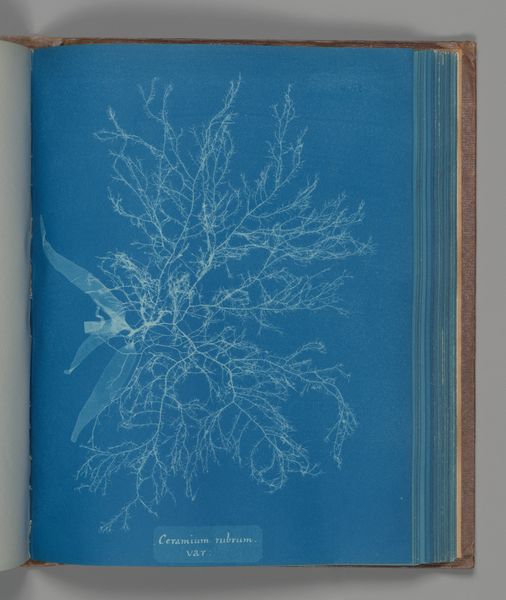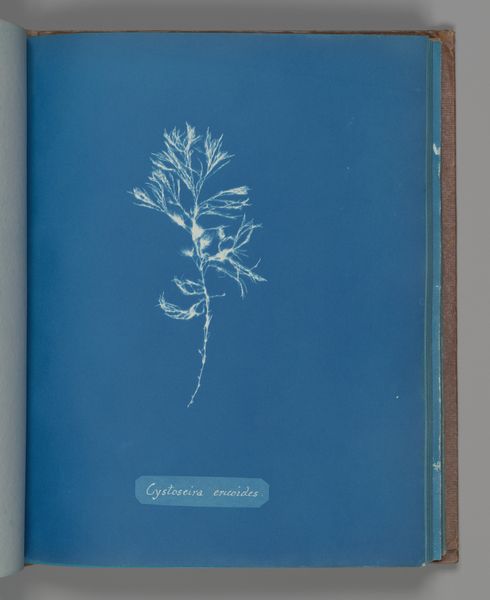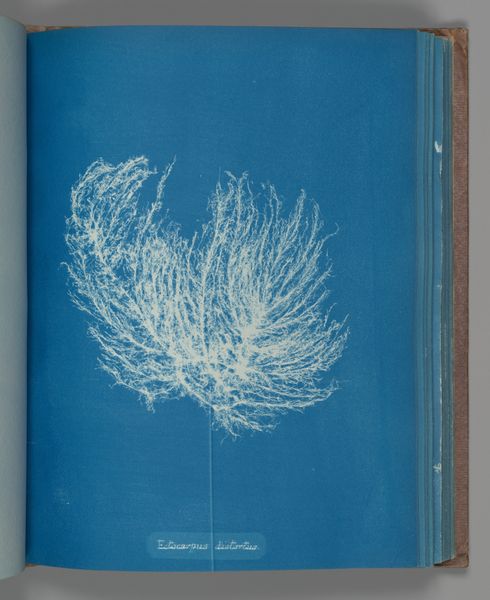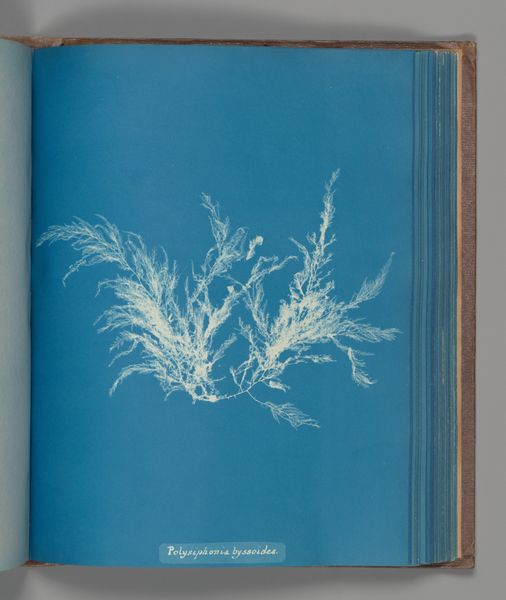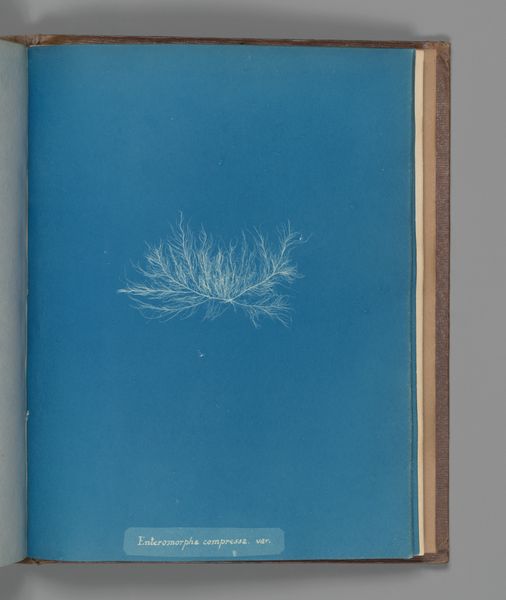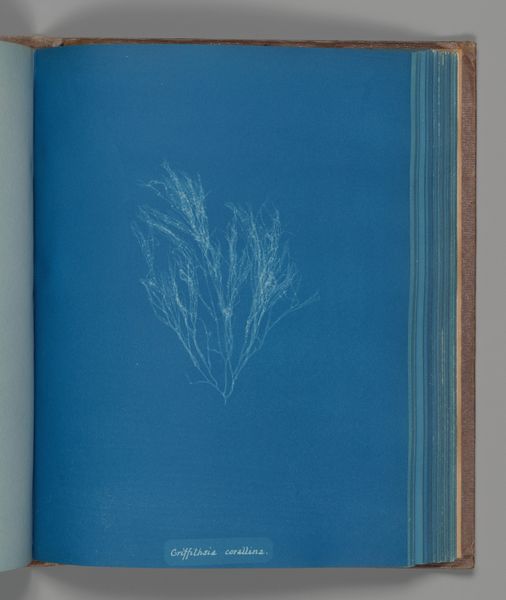
print, paper, cyanotype, photography
#
still-life
# print
#
paper
#
cyanotype
#
photography
#
plant
#
realism
Dimensions: Image: 25.3 x 20 cm (9 15/16 x 7 7/8 in.)
Copyright: Public Domain
Curator: This is "Polysiphonia nigrescens," a cyanotype made between 1851 and 1855 by Anna Atkins. She was documenting algae specimens using this very early photographic process. Editor: It's hauntingly beautiful. That stark white plant against the intense Prussian blue evokes a feeling of being lost in the depths of the ocean, or maybe floating in the vastness of space. There’s something ethereal about it. Curator: Indeed. The cyanotype process itself is so interesting. Atkins essentially created a photogram, placing the algae directly onto sensitized paper and exposing it to sunlight. It was a direct impression, a shadow of the plant made permanent. Think about what it meant to accurately represent natural specimens at this time. Editor: That’s the crux of it, isn't it? As a woman in science during that period, Atkins was already pushing against boundaries. To use this cutting-edge technique, a process situated between art and science, speaks to her ingenuity and defiance of expectations. She uses photography not just for aesthetic depiction, but to make objective statements. Curator: It’s also worth considering the symbolism of the plant itself. Seaweed, often overlooked, becomes the subject of intense scrutiny. Is there something about the resilience and adaptability of marine life that resonated with Atkins herself? Consider its placement—centered on the page, almost venerated. Editor: I see the act of photographic documentation as a form of claiming space, both for the specimen and for Atkins’s scientific endeavor. In presenting this detailed image of "Polysiphonia nigrescens", she is subtly highlighting the importance of women's contributions to both art and science. Each strand feels charged. Curator: Yes, exactly. The image is deceptively simple, but carries significant weight. By turning the unseen seen, through a method both scientific and creative, the image resonates with our understanding of light, matter, and representation. Editor: Looking at the rich, vibrant blue, I'm struck by the possibilities for alternative approaches to image-making today. "Polysiphonia nigrescens" challenges our reliance on conventional photographic technologies and shows us the power of embracing chance, direct experience, and nature itself.
Comments
No comments
Be the first to comment and join the conversation on the ultimate creative platform.
